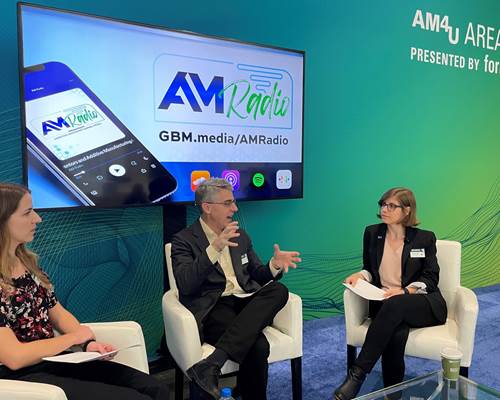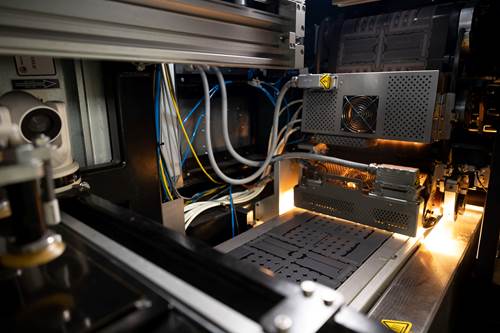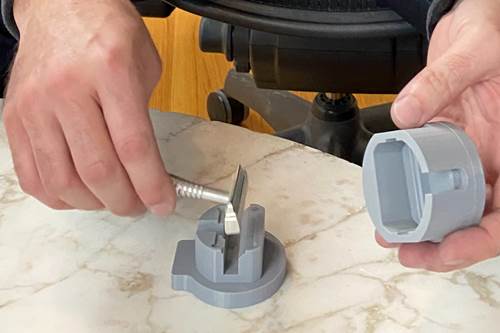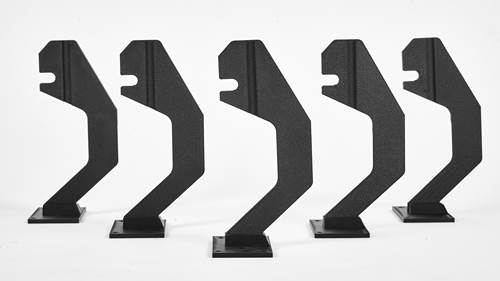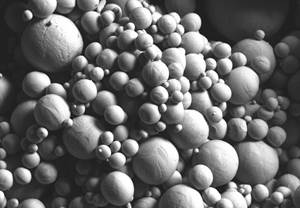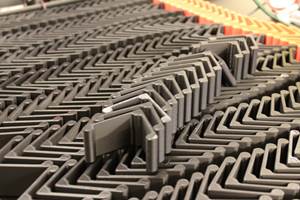3D printing first gained traction as a tool for rapid prototyping, but as the technology has advanced, there are now numerous advantages to choosing additive manufacturing for production. Here are some of them:
Design freedom
Additive manufacturing is not limited by molds, fixturing or other hard tooling considerations. It is possible to 3D print complex shapes with organic geometries; conformal passageways; nonround holes; lattice structures; and other optimized shapes that would be challenging or impossible to produce conventionally.
Material options
Additive manufacturing makes it possible to utilize materials that might be difficult to cut or form with other processes. Titanium, Inconel and ceramics are among the materials that are challenging to machine for instance, but relatively easy to 3D print. AM also provides the opportunity for multimaterial components that apply high-value materials only in the places they are needed, and better control over reinforcements like continuous carbon fiber. Increased accessibility to high-performance polymers and polymer composites through 3D printing also means that many items that might have been metal in the past can now be produced additively, with less waste, and from a lighter and often cheaper material.
Assembly consolidation
Because of the complexity enabled by 3D printing, it is often possible to combine multiple parts of an assembly into a single 3D printed component. Assembly consolidation may be as simple as joining two halves of a hollow piece, or as sophisticated as combining what might have been dozens of individual parts previously. Consolidation can even include embedded items like metal inserts and sensors. When applied this way, AM can dramatically reduce the number of manufacturing operations, fasteners, glue, hand labor, suppliers and overall pieces needed to produce a particular component. As a side benefit, limiting the number of overall materials can also make such items easier to recycle.
Lightweighting
Assembly consolidation and design possibilities through additive manufacturing make it possible to create very lightweight structures. Because AM applies material only where it is needed, components need not carry any extra mass; adding additional stock only increases printing time and material consumption. When combined with topology optimization or generative design strategies, 3D printing can massively reduce the weight of brackets, brake panels, combustion chambers, cutting tools and much more.
Speed
While 3D printing an individual part may be slower than machining, casting, molding or forging one, these conventional processes require tooling and setup that 3D printing does not. In cases where no tool is available, or there is no time to wait for one to be developed, additive manufacturing can be applied to manufacture parts directly. The time savings can be significant, with AM delivering parts in days or weeks compared to the months it might take to have a mold tool produced, for instance.
Local or distributed manufacturing
Related to the above point regarding speed, 3D printing is increasingly available closer to the need than a conventional supplier might be. In the face of supply chain disruptions and unpredictable global shipping, AM can be the way to produce needed parts locally and quickly. Various entities are working to develop distributed manufacturing networks that will be able to send part files to a 3D printing facility close to the customer, reducing the environmental impact of shipping for these goods. IP protection is a concern for traveling part files, but efforts to incorporate security measures like biometrics and blockchain are bringing solutions.
Less waste
Along with literally producing less waste in the form of scrap during manufacturing, 3D printing also supports on-demand manufacturing meaning that parts can be made only when needed. Designs can live in a “digital inventory” rather than a physical one, so that there is no physical excess to dispose of if it goes unused. On-demand production is generally a more sustainable method of manufacturing as well.
Cost savings
While not universally true, additive manufacturing can be a more cost-effective method of production. For an inventor looking to bring an idea to market, or an OEM looking to soft launch a product, AM offers an affordable way to manufacture initial runs without making the investment into expensive tooling or equipment. If the demand is low, the risk in testing the market is much less; but if the product sells, the creator can always ramp up using a conventional process, with the added reassurance of customer feedback already under his or her belt.
Mass customization
Additive manufacturing also makes mass customization more affordable and easier to apply. With no need for hard tooling, it is possible to create tweakable base designs for shoes, furniture, hearing aids, mouthguards, orthotics, splints and more that can be customized to the specific customer or patient with no added cost in manufacturing.
